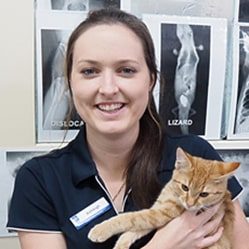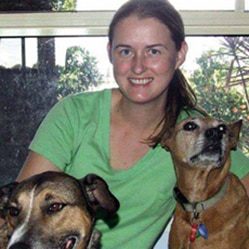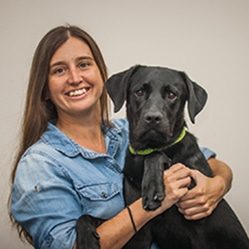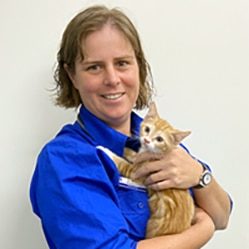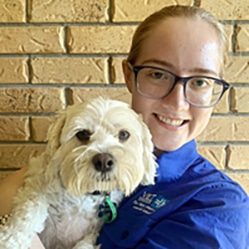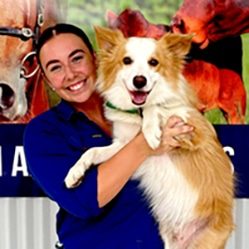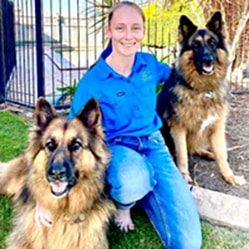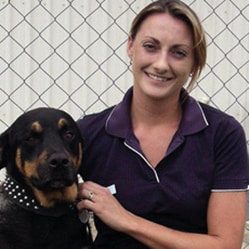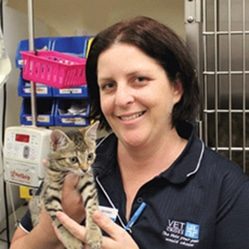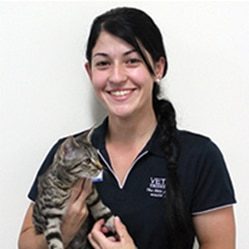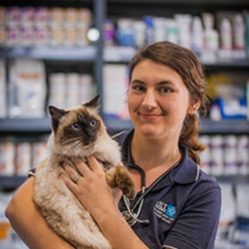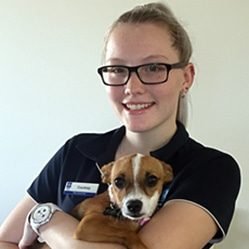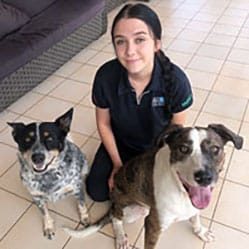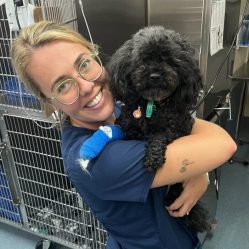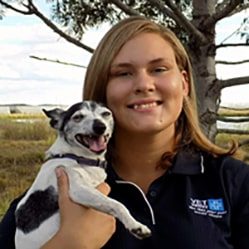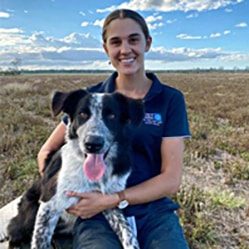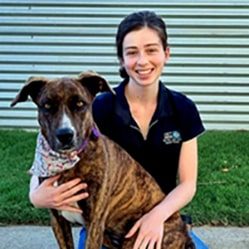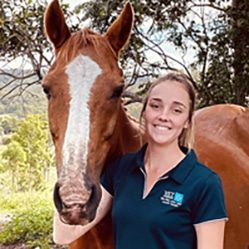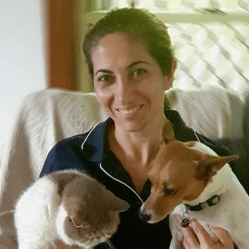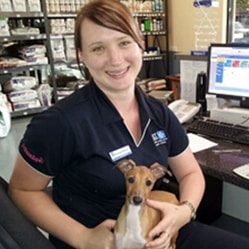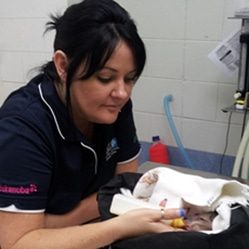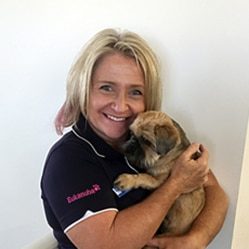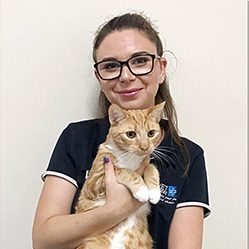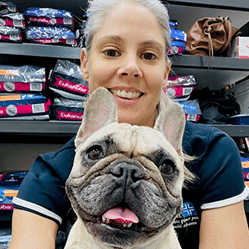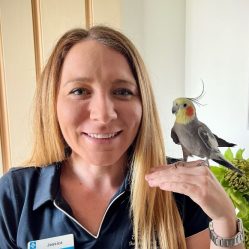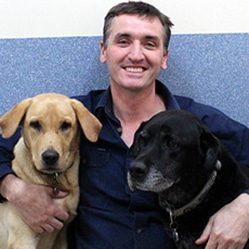What should I feed my kitten or cat?
Once weaned, your kitten is dependent on you to provide a diet that is complete and balanced for its proper growth and development, and for the maintenance of its health as an adult. Premium foods made from high quality ingredients are designed to consistently provide a complete and balanced diet for all life stages of your cat, depending on age, breed, level of activity, pregnancy and health. Kitten or growth, adult, senior and light formulas are available. You can feed a mixture of canned and dry food, although dry biscuits will help maintain healthy gums and teeth. A complete diet means that supplements are not required. Table scraps, all-meat diets and dog food are not adequate for the long-term health of your cat.
When should I have my kitten desexed?
De-sexing of both males and females is recommended before the onset of puberty, generally around 5-6 months of age. Some vets will recommend earlier de-sexing from 12-16 weeks of age. It is best to ask your own vet and be guided by their preference.
Spaying of female cats will prevent unwanted pregnancies and the annoying attention of roaming tomcats. Spaying at a young age (before their first season) will prevent mammary tumours (breast cancer) and pyometra (infection of the uterus which is often a surgical emergency).
Neutering or castration of males before puberty will decrease the problems of aggression, urine spraying, fighting and the tendency to roam (decreasing the risk of being lost or hit by a car). Medically, castrated cats cannot develop testicular cancer. Your vet will be able to give you the best advice on what age your kitten should be de-sexed.
What vaccines does my kitten or cat need and how often?
Vaccination is cruical to protect your kitten or cat against viral disease. Vaccinating your cat stimulates its immune system to produce antibodies against the virus, preventing it from causing disease. There are 3 major cat diseases caused by viruses in Australia that are highly infectious and cause serious illness, even death:
- Feline Infectious Enteritis (Feline Panleucopenia or Cat Distemper)
- Feline Respiratory Disease (‘Cat Flu’)
- Feline Leukaemia Virus
Another common respiratory infectionfor which a vaccine ha only recently been developed is Feline Chlamydia. This disease is principally seen as conjunctivits in young kittens aged 5-9 months. Kittens are vaccinated at approximately monthly intervals from 6-8 weeks of age until 16-18 weeks of age, and then vaccination is annual. Kittens are given these boosters because the antibodies they got from their mother actually interfere with the effectiveness of the vaccine. Since kittens lose these antibodies at different rates, we give 2 vaccinations to ensure all kittens will develop sufficient levels of antibodies to protect them during their first year of life. Vaccination programs may vary depending on risk factors, the age of first vaccination, and the type of vaccine used. So be guided by your veterinarian’s advice for your situation.
What is microchipping? Does my cat need a microchip?
Microchipping is now compulsary for both cats and dogs as a permanent and safe form of identification. Unfortunately, many famliy pets are euthanased every day because they cannot be identified. Microchips cannot be altered and do not fade over time, whereas tags and collars can easily be lost. The microchip is injected under the skin between the shoulder blades and remains there for life, ready to be identified by a special scanner and your pet promptly returned to you if lost. Ask your vet for more information on microchipping and the requirements in your area.
Can I give my cat a bath?
Giving your cat a bath can be a difficult procedure, with some cats becomming very distressed or even aggressive. Bathing in this case may not be appropriate unless the cat has a skin condition that requires treatment with medicated shampoo. Consider a professional groomer or your vet for assistance. Some cats allow and enjoy regular grooming, which is important for good skin and coat condition and general health. Even though cats groom themselves by licking and cleaning, they still need regular brushing and combing to remove loose hair, prevent matting and keep the skin free of diseases and parasies, such as fleas. Many cats, especially those with short coats, rarely require a bath. Longhaired cats, those that are unable to groom themselves sufficiently for various reasons or those that have rolled in something unpleasant may require frequent bathing. Over frequent bathing though, or use of innapropriate products can lead to dry, itchy skin and a dull coat.
How often should I worm my cat?
Intestinal worms such as tapeworm and roundworm are a common cause of diease in cats, especially kittens. Since roundworm can affect humans, particularly children, kittens need to be wormed every 2 weeks until 12 weeks of age, then monthly until 6 months of age and then every 3 months from then on. Regular worming is essential – while treatment kills worms present in the intestine at the time, re-infections can occur from other pets and the environment. Once is not enough.
I think my cat has fleas, what should I do?
Your cat may have fleas, even if you can’t see them. Fleas can build up rapidly to plague-like proportions under the right conditions. Adult fleas live and feed on your pet but 95% of the flea population live as eggs, larvae and pupae in the dirt, carpet, bedding and cracks and crevices of your home and jump on your pet to feed on their blood. Fleas can cause itching, scratching, skin allergies, dermatitis, anaemia and transit tapeworms. They can bite humans as well. The only effective way to get rid of fleas is to start a flea control program, both on and off your pet.
All fleas must be removed from the cat and its environment, including other household pets. There are many safe and effective flea products available for killing fleas on your dog and cat (also for puppies and kittens), and for preventing fleas reinfesting them. Your vet will be able to recommend the best product for your pet.
Then you need to kill fleas and the other stages of the flea life cycle in the environment. This means flea-bombing areas in the house that the cat can access, treating sleeping areas, baskets, or bedding and identifying outdoor areas where fleas may exist. This may man blocking off access to under the house, and using outdoor flea products in places like sandpits or favourite resting areas. Don’t forget the car if you travel with your pet!
What if my cat won't use it's litter tray?
Many medical diseases can cause a cat to urinate or defecate inappropriately outside the litter tray, so a veterinary exam is required to differentiate these problems from behavioural problems. For example, it is common for cats with cystitis to urinate small amounts in many different areas of the house, also diseases that make cats drink more will mean they need to urinate more, and if the litter tray is already soiled it will seek other areas to urinate. Sometimes older cats with arthritis may find it difficult to get in and out of a tray with high sides, or to negotiate stairs to the litter tray. Stress or anxiety may be a contributing factor, such as moving house, other cats in the house or a new family member. The type of box, the type of litter, its location, and how often and with what it is cleaned with are all factors influencing the cat’s decision to urinate elsewhere. Here are a few ideas to help retrain your cat to use the litter tray:
- Location. If there is one particular area the cat is using, put the litter tray there and gradually move it to the location you want the tray to be. Move it about 5cm a day
- Litter tray. The tray itself, the type of litter, frequency of cleaning and cleaning agents (soapy water is sufficient)
- Decrease the attractiveness of the area the cat is using by cleaning it with and odour neutraliser
- Feed your cat in the area or put their sleeping basket in the area
- Deny access to the problem area
See your vet if house soiling remains a problem.
How can I stop my cat spraying in the house?
Spraying behaviour is when cats mark territory by urinating small amounts on (usually) vertical surfaces. The act of spraying involves that cat backing up to a surface, raising and quivering its tail, and treading with its back feet as a small amount of urine is directed backwards. Spraying is usually associated with territorial or competitive behaviour, especially in male entire cats. The presence of other cats around the house is a common cause of stress in cats, and may lead to the marking behaviour of spraying. Check with your vet first to rule out any medical problems. If the problem is behavioural your vet may prescribe medication to decrease anxiety or a pheromone spray that helps prevent and stop urine making, and also settles and calms cats in unknown or stressful environments. Castrating male cats at an early age is the best way of preventing male usine spraying. Keep litter trays clean (using soapy water) and clean any urine marked areas.
How can I stop my cat spraying in the house?
Feline Lower Urinary Tract Disease (FLUTD) includes disorders of the bladder and urethra. The syndrome has several causes, including crystals that form in the urine and which irritate the bladder wall, bladder stones, bacterial infection, tumours and unknown causes (idiopathic). Most crystals in cats are known as struvite crystals. Diet is thought to play a role in the development of struvite crystals, especially the levels of magnesium, calcium and phosphorus. The pH of the urine is important, as is the amount and frequency of unrination. Overweight, inactive cats that tend to urinate infrequently are predisposed to FLUTD, as are cats that have lower water consumption. Stress may also contribute to the development of the clinical signs of urinary tract disease.
Signs include blood in the urine, straining to urinate, urinating small amounts frequently, inappropriate urination often in the bath or sink, or inability to urinate due to blockage. If this is not unblocked, signs of vomiting, anorexia, depression and colapse will occur, followed by death within a few days. If your cat shows any of these signs you should take your cat to the vet immediately for prompt treatment.
When does my cat begin heat cycles and how can I tell?
female cats (queens) reach puberty and have their first heat cycle between 4 and 12 months of age. After this they usually cycle every 3-5 weeks from late winter to late summer, although there are variations in individual cats. After pregnancy, the cat will ‘come on heat’ once the kittens are weaned. Heat cycles last around 7 days, sometimes longer, and the cat becomes very vocal, ‘calling’ constantly, arch their back when stroked, raise their tail and often tread with their hind legs. Vulval swelling and discharges are often not noticeable. Spaying your cat at a young age will prevent this behaviour, and also unwanted pregnancies, breast cancer and infections of the uterus.
Why is my cat scratching at its ears all the time?
Any ear problem can cause affected cats to scratch or paw at their ears or shake their heads. Foreign objects in the ear, allergies, ear mites, certain skin conditions and infectionswith bacteria, fungi and yeasts can all cause ear disease. Check your cat’s ears regularly and if you notice and discharge, unpleasant smell, redness, swelling, lumps or pain you should visit your veterinarian immediately. A special tool (an otoscope) is required to look down the ear canal to diagnose the problem correctly and prompt treatment will ensure the problem doesn’t become more serious. Regular cleaning of your cat’s ears at home with an ear cleaner provided by your vet will help reduce the liklihood of ear infections and excess waxy build up.
Why does my cat have bad breath?
Dental disease is one of the most common problems affecting dogs and cats today. In humans, tartar builds up if we do not remove it by brushing. Likewise in animals. tartar builds up if it id not removed by chewing on raw bones or other gnawing toys, or by brushing. tartar then develops into calculus, which is visible hard, yellowy, mineral build up. The the gums recede from around the teeth, and other supporting structures for the teeth are weakened, leading to tooth infections, tooth loss and bad breath. This process is called peridontal disease. Apart from tooth problems, peridontal disease can also affect general health as bacteria are released into the bloodstream through the inflamed gums and can lodge in places like the kidneys and heart valves, causing problems in these sites. Therefore, mouth health is important for your pet’s overall health and longevity. If there is a significant tartar build up or inflammed gums (gingivitis), your cat will need ultrasonic scaling by your vet, which needs to be performed under an anaesthetic.
Can I brush my cats teeth?
It is a good idea to incorporate brushing your cat’s teeth into his or her regular grooming program. Apart from tooth problems, dental disease can also affect general health as bacteria are released into the bloodstream through the inflamed gums and can lodge in places like the kidneys and heart valves, causing problems in these sites. There are flavoured toothpastes containing enzymes that help break down plaque and kill bacteria, although the mechanical removal of tartar is the aim. Do not use human toothpastes, sa these are not designed to be swallowed and can irritate the stomach if ingested. There are also various gels and liquids that contain the same sort of ingredients, and are an alternative if your pet disagrees with having its teeth brushed. Again, it is much easier to train your dog or cat to allow tooth brushing from an early age, rewarding for good behaviour. You can use a pet toothbrush or a finger toothbrush. You only need to clean the outside surface of the teeth, concentrating on the gum margin.
How do I clean my cat's ears?
Checking your cat’s ears regularly is an important part of the grooming routine. If your cat’s ears aapear dirty or waxy then it is time for a clean. If you notice and discharge, unpleasant smell, redness, pain, swelling, excess scratching or rubbing of the ears it may indicate an ear infection or other abnormality and you should consult your veterinarian straight away. Ears can be simply cleaned by using an ear cleaning solution provided by your vet. Ear cleaners remove excess moisture, wax and debris from the outer ear canal. Dribble a few drops of the appropriate ear cleaner into the ear canal, and massage gently at the base of the ear (you will hear a squelching sound as you do so) to work in the solution. Stop if this appears to be painful to your pet and consult your vet. Repeat with the other ear. Use cotton wool to wipe away any excess solution, and to clean out any wax or debris. Use your forefinger and only clean as far as it will naturally reach to avoid hurting the eardrum. Never use cutton buds or poke anything in to the ear as you can damage the sensitive lining of the ear canal, or worse, perforate the eardrum.
Should I clean my cat's eyes?
Cats and dogs accumulate small amounts of secretions and debris at the inside corners of their eyes, just like ‘sleep’ in humans. These can be wiped away gently woth a damp cotton ball, being careful no to touch or rub the eyeball. Some breeds tend to have more discharges and staining of the hair at the eyelid corners. Products are available to help reduce this discolouration, especially in light-coloured cats, and any long facial hair can be carefully trimmed to prevent irritaion of the eyes. If the eyes are weeping excessively you should contact your vet – this could be due to conjuncitvitis, a serious ulcer or abnormalities of the tear duct. If a foreign body such as a grass seed is present your cat may blink excessively and the lidsd will swell. Symptoms like these or any suspected eye problem should be treated as an emergency to avoid serious complications and, at worst, loss of the eye.
How can I stop my cat scratching the furniture?
Cats naturally scratch objects to shorten and condition claws, to mark their territory and to stretch. A lot of cats that have access to outside find their preferred scratching are on a tree or fence, but indoor cats need to find something to scratch, and if a substitute is not available, that will most likely be your new sofa. Teach your kitten to use a scratching post and to play with toys to redirect this behaviour from your furniture and from you. Do not use your hands in a game as this encourages your cat to attack your hand, and is difficult behaviour to stop once the cat is fully grown. You can also use positive reinforcement in the form of food treats, praise and a cuddle when your kitten uses the post or plays with its toys.
Place the scratching post in a prominent area until the behaviour is established, and then you can move it to somewhere less obvious. Indoor cats often need more than one post and cats have varying preferences for the material they like to scratch – such as tightly woven material, hessian, sisal, or a more loosely woven material where the claws can hook and tear during scratching. Most posts are upright, and need to be taller than your cat in full extension, although some are wall or door-mounted. Providing a play area incorporating the post will encourage your cat as well. There are many play centre-type structures with dangling toys, toys on springs, and even multilayered cubbyholes. If your cat continues to prefer the sofa to its hight-tech pole and play centre, you may need to limit its exposure to those areas, discourage the behaviour by covering the area with aluminium foil or double-sided sticky tape, or use remote punishment. Never direclty punish your cat as this will cause fear or aggression towards the owners, and at best, that cat will only learn to stop the scratching while the owner is around.
How do I train my kitten to use a litter tray?
By about 1 month of age, kittens toilet by themselves, following their mother’s example by digging in loose material (litter or soil), so they tend to use litter trays once in their new environment without much training by the owner. Kittens tend to go to the toilet after eating, after they wake and after they play. Supervise your kitten at these times to ensure use of the litter tray. You may need to confine him to a small area containing the litter tray if you are unable to supervise.
Use a litter tray with short sides initially and keep it as clean as possible. One method is to line the tray with newspaper and provide a cupful of litter in which to eliminate, then the whole contents can be emptied every time it is used. Clumping types of litter allow you to remove small amounts daily. Clean the tray using soapy water and rinse well; strong disinfectant smells may discourage the kitten.
Place the litter tray in a private, quiet environment. Some cats have preferences for the location of the litter tray and you can test this by placing several litter trays in different locations, and see which one is used more frequently. If you are away for long periods, it is a good idea to use more than one so that if one is soiled, your cat can always use the other. Do not place these trays next to each other. In multiple cat households, it is recommended to use one more litter tray than there are cats. Some cats have preferences for the type of litter, and you can determine this by offering a few litter trays side by side containing different types of litter, to see if he prefers a particular type.










